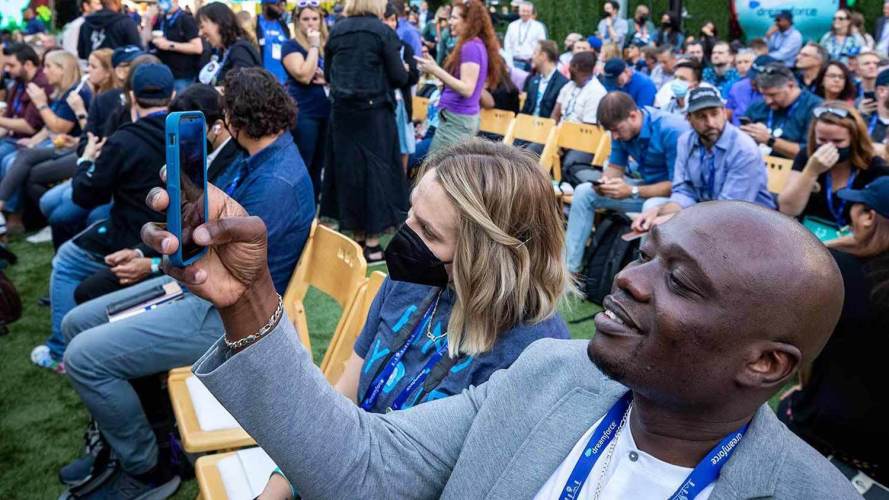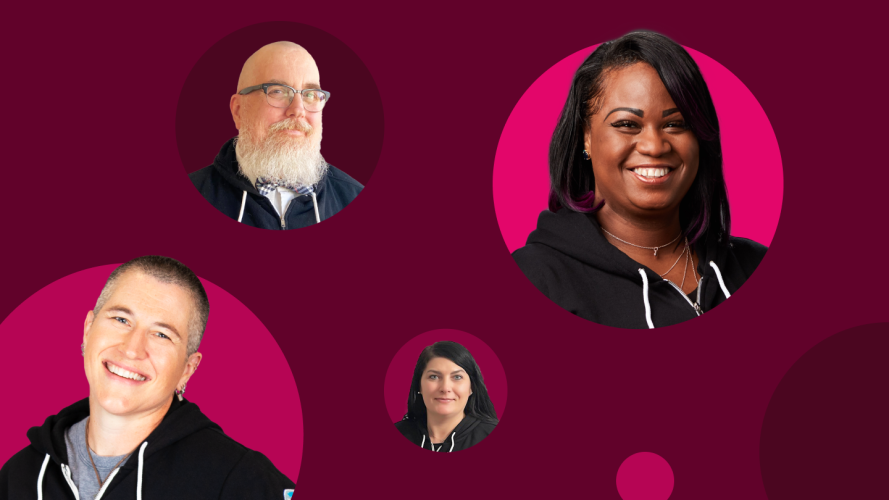We Can Get Together Safely – Here’s the Key



Eager to do more business in person? You'll need employees and customers to trust that it's safe – and worthwhile. See how leading companies are doing it.

Brian Costa
It took years of planning and $450 million for KPMG to open the doors to its much-anticipated Lakehouse, a 55-acre training and innovation center in Orlando, in January of 2020. It took only 10 weeks for the facility—the largest capital investment in the company’s history—to be closed by the pandemic.
“The first question we were getting from everyone was, ‘What are we going to do with the Lakehouse?’” recalled Sherry Magee, senior director of community relations for Lakehouse. Yet KPMG managed to reopen the facility in the spring of 2021. With the right health protocols – and a strategy to build attendees’ confidence in them – it brought in around 7,000 employees for events last year.
You don’t need to be a massive global company to want some version of that outcome for your own business: people coming together in the same physical space again, if not always then at least more often. By now, you’ve probably also learned that simply waiting for Covid-19 to go away for good isn’t a strategy.
The key for any business looking to do more business in person in 2022 is finding a way to build trust in both the value and the safety of regathering. The companies at the forefront of bringing people together again – whether for office work, conferences and events, or just a cup of coffee – are all integrating health and safety into their operations like never before.
“Every company is in the business of health now,” said Dr. Geeta Nayyar, Chief Medical Officer at Salesforce. “The companies that truly embrace it and come at it from the lens of – this is for the long term, not the short term, and we are going to lead – they’re going to be the champions at the end of the day, because they really are going to garner the trust of both their employees and their customers.”
But what does it actually take to get there?
Becoming a health company
The short answer, for starters: real medical expertise. Just as companies have long integrated experts in law and finance into their decision-making, more of them are bringing doctors and epidemiologists into the fold. Whether adding an in-house executive, outside consultants, or both, many companies have had to add an entirely new perspective.
This article appears in Vantage Point, a Salesforce magazine



One of the earliest American companies to feel the full force of the pandemic was MGM Resorts International, whose Macau, China, resorts were shut down in February 2020. It was a preview of the challenges the company would soon face across its portfolio of hospitality and entertainment businesses. And it prompted MGM to hire a panel of medical consultants to partner with its internal head of health and safety.
The group didn’t just monitor general public health guidance. It researched the logistics behind some of the earliest major in-person events to resume in the U.S. It found out, for instance, details of the bubbles created for the National Hockey League and National Basketball Association postseasons, down to which testing vendors the leagues used.
The result was a list of health protocols for meetings and events that MGM calls “Convene With Confidence.” The document covers a range of issues including vaccine verification and testing options, mask requirements, and procedures for guests who test positive on site. Customers have some flexibility on health precautions when planning meetings and events with MGM, based on their preferences, group size, and budget.
“No group was forced to test, no group was forced to do vaccination passes,” said Stephanie Glanzer, MGM Resorts’ SVP and chief sales officer. “But we had a template to say, ‘Here’s what your options are,’ and many took us up on that.”
“Convene With Confidence” reflects two things about regathering safely. It can mean different things to different companies. And sound health measures alone aren’t enough.
The psychology of getting together again
For KPMG’s Lakehouse events last year, attendance was voluntary. The firm not only required attendees to submit proof of vaccination, undergo on-site testing, and maintain social distancing. It also identified several moments of communication with employees before, during, and after events that it could use to build trust in their safety. From listing protocols to then prompting attendees to upload vaccination cards, the level of communication conveys a certain legitimacy to the company’s efforts.
There’s a reason companies have to work harder – communicating more often and in greater detail – to convince their employees of the safety of doing business in any in-person setting. Employees are generally not inclined to simply take the company’s word for it.
In a 2021 Gartner survey of more than 2,400 knowledge workers, only 55% of individual contributors said they trust the communications that come from their organization. Only 41% said that senior leadership acts in their best interests.
Also: doing business in person has never felt less obligatory. Even if it’s shown to be safe, employees in a candidates’ job market increasingly have choices. That means companies also have to build trust in the value of regathering. Why is an office worth going to? Why is an event worth traveling to?
Priya Parker, author of the book “The Art of Gathering: How We Meet and Why It Matters,” said companies generally need to do a better job of conveying what the point of meeting is and what each attendee can gain and contribute.
“The biggest mistake we make when we gather – this was true before the pandemic, and it’s still true now – is we assume that the purpose is shared and obvious,” Parker said.
How to get together safely and at scale
Building trust in safety isn’t necessarily complicated for small gatherings. It gets harder as more companies try to bring more people together in person again on a more regular basis. Glanzer, of MGM Resorts, said, “The number one question I get is, ‘This all sounds great for 10 people, but how do we do this at scale?’”
That’s where technology becomes a key part of the solution. Products like Salesforce’s Safety Cloud or CLEAR’s Health Pass, which MGM uses, can scale the collection and verification of attendees’ vaccination status and test results, while creating agile, automated, and mobile-friendly communications.
That’s one way companies can build trust in the health and safety of a gathering without the sheer logistics of health and safety overtaking the entire event.
Making better use of outdoor space can help, too. Nayyar was at a health conference last fall at the same oceanfront resort in southern California where it is typically held. Only this time, there were far more sessions held outside, with masks required only indoors. As they mingled overlooking the beach, attendees could focus on why they were there.
“I felt safe, but I also got the purpose out of this meeting, which is to meet my customers, network, and do the business of the day,” Nayyar said. “We cannot stay in our houses for the next however many years. We have to get smarter.”
Bring employees and customers together, safely
Check out our playbook for managing COVID-19 testing protocols and validating entry to events and workplaces.


























